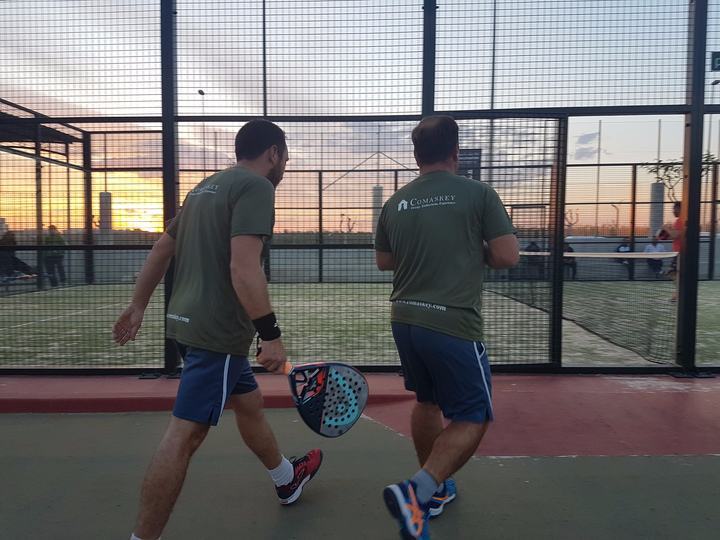
Padel is a relatively young sport and has been enjoyed by many Spaniards since the eighties. It is played in couples and there are three important elements in order to play the game: the ball, the racquet and the court.
Compared to tennis, the court is smaller and has no doubles lanes, and the net is lower. Padel tennis is played with a solid padel as opposed to a strung racquet, and a depressurized tennis ball is used along with an underhand serve.
The sport has clearly defined rules and it is represented by federations and associations. Padel is typically played in doubles on an enclosed court about half the size of a tennis court. The balls used and the scoring is the same as normal tennis, just with a little less pressure, and so the biggest difference is that the court has walls and the balls can be played off them in a similar way as in the game of squash.
The sport was invented in Acapulco, Mexico by Enrique Corcuera in 1969. It is currently most popular in Argentina, Spain, Mexico and some other Latin American countries and it is now beginning to spread rapidly across Europe and other continents.
Padel is great for players of all ages and skills, as it is both quick and easy to pick up, and is less physically demanding than similar sports like squash. Most players get the grasp of it within the first 20 minutes of playing and find it easy to achieve a level of proficiency so that they can enjoy it because the game is not as dominated by strength and serve as tennis (in fact, the serve in padel is under-arm).

Padel scoring is the same as that used for tennis, i.e. 15, 30, 40 and game, with deuce at 40-40. Then two clear points need to be won before the game is over. The matches are usually the best of three sets, a set being the first side to gain six games with two clear games. At 6-6 a tiebreak is played, which is the first side to seven points with two clear points between the sides. If a 3rd set is played, at 5-5 play continues until one side has a two game lead over their opponents. If it is agreed beforehand, a tiebreak can be played instead of a 3rd set.
All serves are underhand. The first serve is taken from the right and then is alternated between the right and left sides. The ball is dropped onto the floor, behind the line marking the 7m x 5m service box and between the centre line of the court and the side wall.
For the serve only, the ball has to be hit at or below waist level. The serve is hit clear of the net directly into the opponents diagonally opposite service box, where it must bounce. The ball can go on to hit the wall but if, after bouncing in the opposite service box, the ball goes on to hit the metal fence, it is a fault. The receiver can choose to hit the ball before or after it hits the wall. Once the ball has landed in the correct service box and the ball has been returned correctly, the whole of the 10m x 10m playing surfaces on either side of the net, are in play.
If during the first or second serve the ball hits the net cord and then lands in the correct opponents service box a let is called and the serve is taken again. During rallies, the ball is only permitted to hit the playing surface once. A player can choose whether to volley the ball or to let it bounce. If the ball bounces it must land directly onto the 10m x10m playing surface without prior hitting the fence or walls, otherwise it is a fault.
After hitting the playing surface, the ball can continue on to hit the wire fence and/or the walls, any number of times before the player returns the ball over the net. The receiver can either hit the ball directly back into the servers playing area or they can first hit the ball onto their own side and/or back walls, before returning it. If the ball is hit onto the wire mesh before being returned over the net it is a fault.
If the ball goes over the 4m high metal fence the point is usually won but there is a rule that sometimes applies to allow a player to return the ball from outside the court and this is covered in the full padel rules. Play continues within these parameters until the ball bounces twice on the playing surface or a player contravenes any of the rules.
Summary
– Players: Played in doubles only.
– Serves: Underhand.
– Score: Scoring method is the same as in tennis.
– Ball: Very similar to tennis balls. Tennis balls are sometimes used.
– Padel: Solid with no strings. May be perforated.
– Walls: Walls are used as part of the game.
At the Orihuela Costa Sports Centre, local to us at La Zenia, there are Padel courts where you can try this fun sport. Why not telephone them for more details?
C/ Niagara no 23 Urbanizacion Las Piscinas
03189 ORIHUELA COSTA 00 34 96 550 39 15